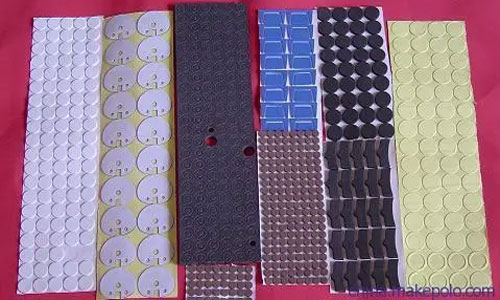
Die cutting is a versatile technique used in the production of various paper products. It involves using a die, which is a specially shaped blade, to cut, score, or perforate paper or cardboard materials into specific shapes or designs. Here are some die cutting techniques and applications commonly used in the paper products industry:
1. Flatbed die cutting: This is the most traditional and widely used die cutting method. It involves placing the paper or cardboard material on a flatbed press, and the die is pressed onto the material to cut out the desired shape. Flatbed die cutting is suitable for cutting intricate shapes, such as labels, cards, and packaging inserts.
2. Rotary die cutting: In this method, a cylindrical die is used instead of a flatbed die. The material is fed through a rotary press, and the die rotates at high speeds to cut out the desired shapes. Rotary die cutting is ideal for high-speed production of repetitive shapes, such as envelopes, stickers, and labels.
3. Kiss cutting: This technique involves cutting only the top layer of a material, leaving the backing or liner intact. It is commonly used for self-adhesive labels, stickers, and decals. Kiss cutting allows for easy removal and application of the labels while keeping the backing intact.
4. Perforating: Perforating involves creating a series of small holes or cuts in the paper or cardboard, allowing for easy tearing or separation along the perforated line. This technique is commonly used for tear-off coupons, tickets, and forms.
5. Scoring: Scoring involves creating a crease or fold line in the paper or cardboard without cutting all the way through. It allows for easy folding and bending of the material. Scoring is commonly used in the production of greeting cards, packaging boxes, and folded brochures.
6. Embossing and debossing: These techniques involve creating raised or recessed designs on the paper or cardboard surface. Embossing raises the design, while debossing depresses the design into the material. These techniques add texture and visual appeal to products such as business cards, invitations, and stationery.
7. Foil stamping: Foil stamping involves applying a metallic foil onto the surface of the paper or cardboard using heat and pressure. This technique is commonly used to add a luxurious and eye-catching finish to products like book covers, certificates, and premium packaging.
Die cutting offers precise and consistent results, making it a popular choice in the paper products industry. It enables the production of intricate shapes, custom designs, and efficient mass production. By utilizing different die cutting techniques, paper product manufacturers can create a wide range of unique and high-quality products.
Here are the topics that we’ll cover in this complete guide Rotary Die Cutting in Industrial Applications Section 2: Categories of Materials in Die Cutting:
2.1 Plastics: Types, Applications, and Die Cutting Considerations
2.2 Non-Metallic Materials: Characteristics and Die Cutting Applications
2.3 Medical Supplies: Die Cutting Challenges and Solutions
2.5 Neoprene, Film, and Vinyl: Die Cutting Techniques and Applications
2.6 Automotive Components: Die Cutting Solutions for Efficient Production
2.7 Electronics: Die Cutting for Precision and Performance
2.8 Non-Wovens: Die Cutting Techniques for Enhanced Efficiency
2.9 Chipboard, Foil, and Corrugated Materials: Die Cutting Considerations
2.10 Fishpaper, Thermal, and Fiberglass: Die Cutting Techniques and Applications
2.11 Digital Substrates: Die Cutting for Advanced Printing Technologies
Contact: Pamela
Phone: +86 189 6365 3253
E-mail: info@industryprocess.com
Whatsapp:+86 189 6365 3253
Add: Yajing Industrial Park, No. 59 Shuangjing Street, Weiting Town, Suzhou Industrial Park
We chat
